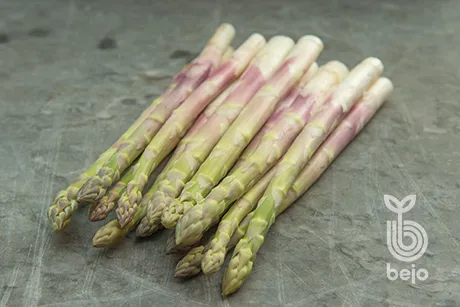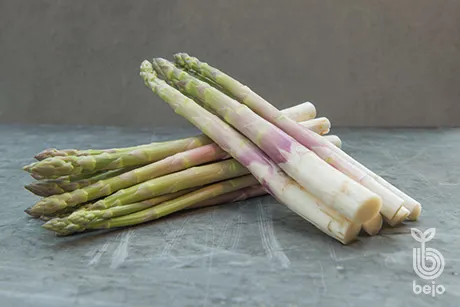"The German asparagus sector needs an impetus to alternative approaches," says Günter Hugenberg of Bejo seed GmbH. "Our new asparagus variety Cumulus TriColore should be the answer to the crisis we' have seen in last year's asparagus sales."
"Due to the warm weather of recent weeks, the first harvests that already started saw bad prices on the market - these are factors that we obviously do not really have a grip on. Bejo wants to focus on those factors that it, as a producer and marketer, is able to influence," says Hugenberg.

Surveys show that younger people hardly ever buy white asparagus. Although this is a well-known trend, it is only rarely included in the cultivation plan: "In the last 20 years, white asparagus production in Germany has roughly doubled, but at the same time sales are dropping. So in my opinion, it was produced on a larger scale than consumers demand." Many young consumers are looking for healthier, summery and light alternatives to the classic serving of white asparagus under a thick layer of sauce Hollandaise, says Hugenberg.
That's where the TriColore asparagus comes in. "Because the Cumulus is anthocyanin-rich, it produces a tricolor asparagus: white, green and purple. The beautiful, colorful stems that grow this way can be cooked unpeeled, and they are recommended for use in raw salads as well roasted in a pan/wok or grilled, or traditionally cooked. The cooking time should be rather short to preserve the pleasant aroma."

Bejo supports the TriColore asparagus with cultivation tips and recipe ideas. "Fast, easy, delicious and healthy: TriColore asparagus, the young, cheeky 'pleasurable asparagus', meets the zeitgeist and appeals to all consumer groups," says Hugenberg. "The new variety should therefore not be a niche product. In an ideal world it should be available to and interesting for the masses."
On the part of producers, the new variety should help diversify the market and restore more stable price margins for the products. "In recent years, we have seen large variations in the price over the weekends and due to changeable weather conditions. With the TriColore asparagus we expect to see a more stable situation: Due to the simple, and above all fast, preparation and the appealing taste, this vegetable is easier to digest and to integrate into daily consumption. This means that this asparagus can leave behind its reputation as a weekend meal. "As it is not completely necessary to peel the vegetable, this will result in additional benefits for the steadily growing convenience segment.
But this variety is not just interesting for the trade; it also requires less plastic in the cultivation and is more environmentally friendly. "The unique coloration requires more light during cultivation than the classic white asparagus, and so the heavy black and white foils are unnecessary. This means less plastic is necessary, and that's a clear advantage." The asparagus is also less sensitive and so it keeps longer. This means it is a step towards less food waste, says the expert.
For more information:
Günter Hugenberg
Bejo Samen GmbH
Danziger Straße 29
47665 Sonsbeck
Deutschland
T +49 172 2613001
E guenter.hugenberg@bejosamen.de
W www.bejosamen.de
